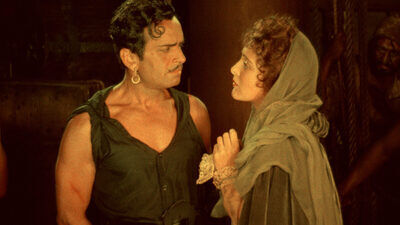The first evening show of the day was Frank Borzage’s “The Lady,” starring the incomparable Norma Talmadge. I first saw this film a few years back as part of the online component of Pordenone, but I may as well have never seen it for how much the big screen transformed the experience. Talmadge at one point was a huge star, one of the first actress-celebrities, making her name in women’s pictures—melodramas for working class women who want to see a little glitz, but also want to see someone who has it worse off than they do. In his introduction for the film, David Pierce said, paraphrasing Norma Desmond, that they really did have faces then. And what a face Talmadge had! The film begins with her as Polly Pearl, the aged proprietress of a British pub in Marseille, who recalls her days as a London dance hall girl who fell for a rich man who, naturally, abandoned her—and their child—to the streets. Talmadge plays every emotion—and every age—with a precision and nuance that simply can only be done justice when projected on the big screen.
“In these harsh times, it’s good to swash a few buckles,” was the message Senior Film Restorer Kathy Rose O’Regan had for the audience as they prepared to buckle up for Frank Lloyd’s 1924 high seas epic, “The Sea Hawk,” which was filmed on location on Catalina Island with over a thousand extras and crew members. Only at festivals like SFSFF will you hear an audience cheer at the mention of an actor like Chicago’s own Milton Sills, a matinee idol who died in 1930 at the peak of his stardom. Like Fairbanks, Sills had a commanding physical presence, if not quite as lithe, and he owns every minute of this wonderfully peculiar pirate picture.

Friday morning began with “The Opportunist,” a Soviet-Ukrainian satire about a small-time black-marketeer, a camel, and the perils of partisanship. In his introduction to the film, scholar Stas Menzelevskyi remarked of the many things the audience could be doing in San Francisco on a beautiful Friday morning, we had chosen the most unorthodox one, and, he hoped, the most rewarding. For my money, he was right. While the satire was aimed specifically at the society of Soviet-Ukrainian in 1929, much of its criticisms could be lobbied at any number of bureaucracies, political factions, and profiteers today.

